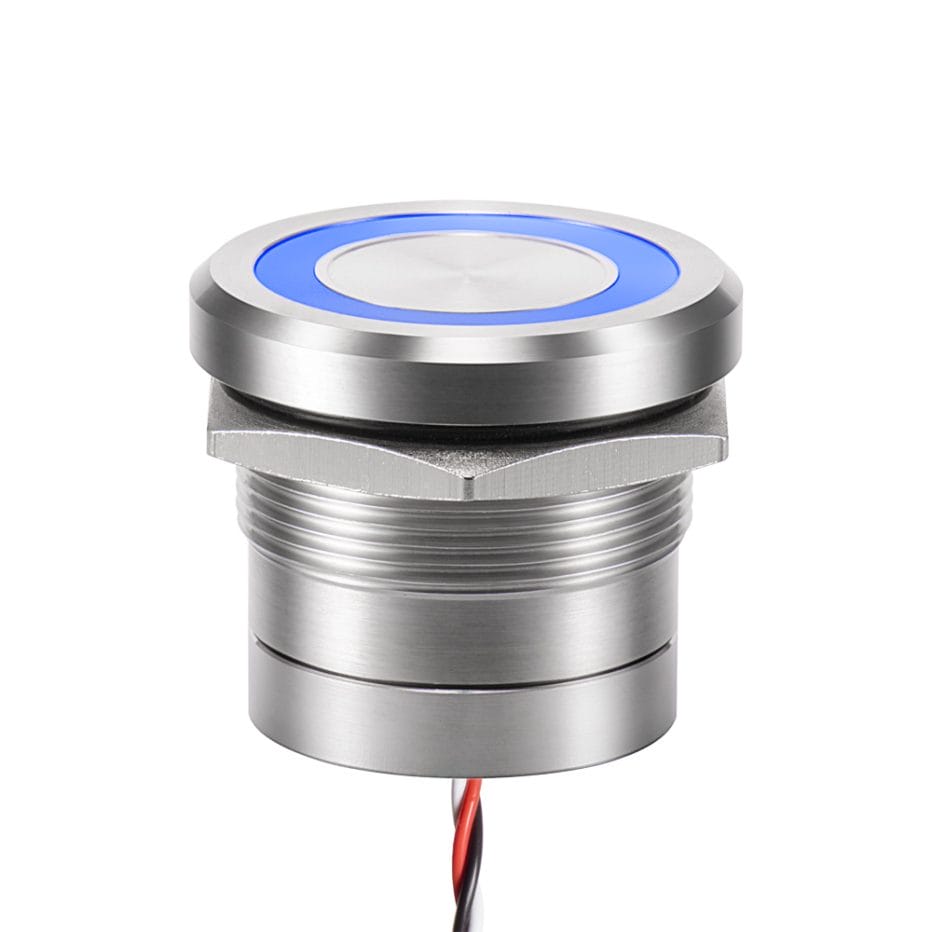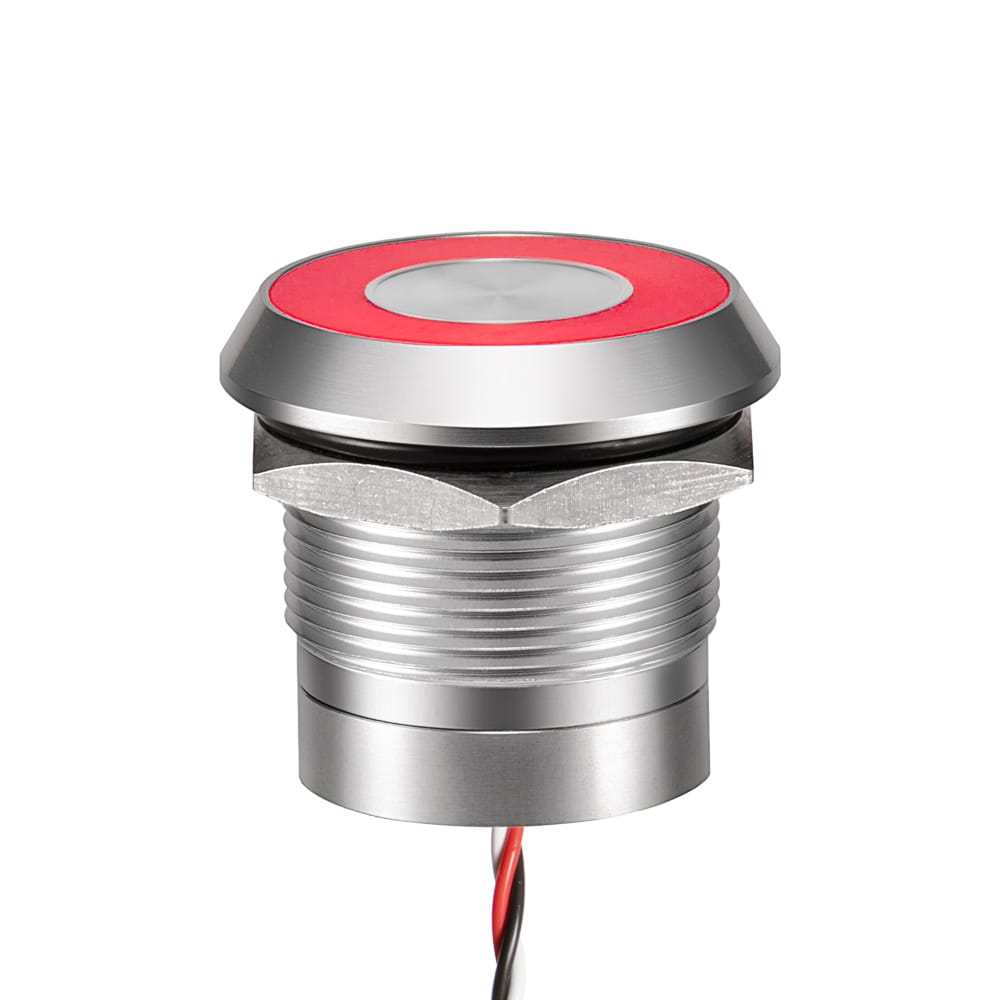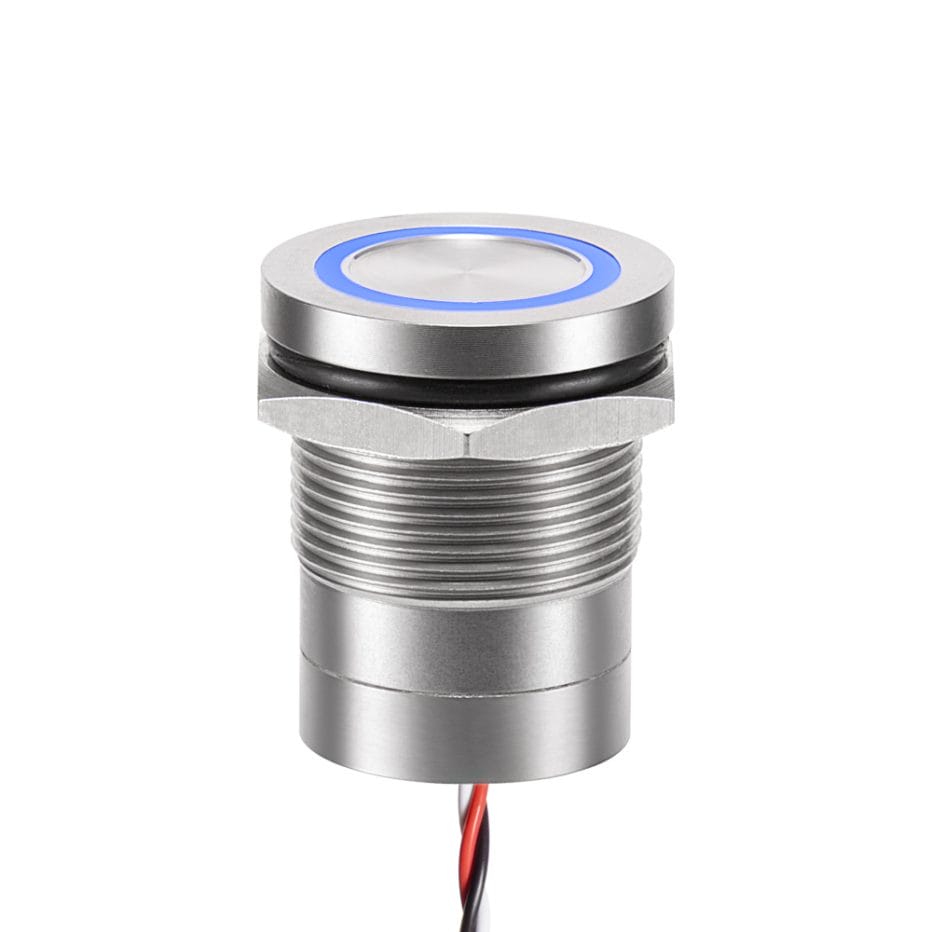
A capacitive switch is a type of touch-controlled electrical switch that operates by measuring change in capacitance. It works in the same manner as a typical capacitive smartphone: when you touch the surface — assuming you aren’t wearing gloves — a small electrical charge is transferred from your body to the switch, which subsequently causes a change in capacitance. The switch detects this change, responding with the appropriate command.
Upon touching a capacitive switch, this electrical charge disturbs the switch’s own electrical charge; thus, causing a change in capacitance. Because of this change, the switch can identify when and where the touch occurred, which is essentially how capacitive switches work.
Design Overview
Most capacitive switches feature three layers: an upper graphics overlay layer, a circuit layer (flexible printed circuit or printed circuit board), and a backer layer. Normally, the overlay layer is made of a durable material like plastic or glass.
Benefits of Using a Capacitive Switch
What makes capacitive switches preferred over other switches? For starters, there are no mechanical components in a capacitive switch, resulting in a longer lifespan when compared to their mechanical counterpart. Additionally, capacitive switches can withstand some of the harshest environments, including outdoor environments. If the intrusion of dirt, dust or moisture is a concern, capacitive is probably the best option for an electrical switch.
The key thing to remember about capacitive switches is that they require direct contact with a conductive object to operate. This is why using a stylus typically won’t work (unless it’s a capacitive stylus).
Capacitive switches can also be used in a wide range of applications, including vending machines, smartphones, tablets, human machine interfaces (HMIs), industrial controls, appliances, infotainment centers and more. Furthermore, they support integration of other features like light-emitting diode (LED) backlights.
Other Types of Touch Switches
Of course, capacitive is only one type of touch switch. Resistive and piezo are two other common types of touch switches, the former of which works by lowering the resistance of two conductive components, while the latter uses the mechanical bending properties of piezo ceramic. Of the three different touch switches described, however, capacitive is typically the preferred choice because of its accuracy, reliability and overall versatility.
As you can see, capacitive switches offer several key benefits, including versatility and longevity. So, if you need an electrical switch, consider using a capacitive switch.
All Langier News:
Read Moreelectronica 2024 Hall-Stand No.: A2 160 November 12-15, 2024 Tr...

 English
English 简体中文
简体中文





